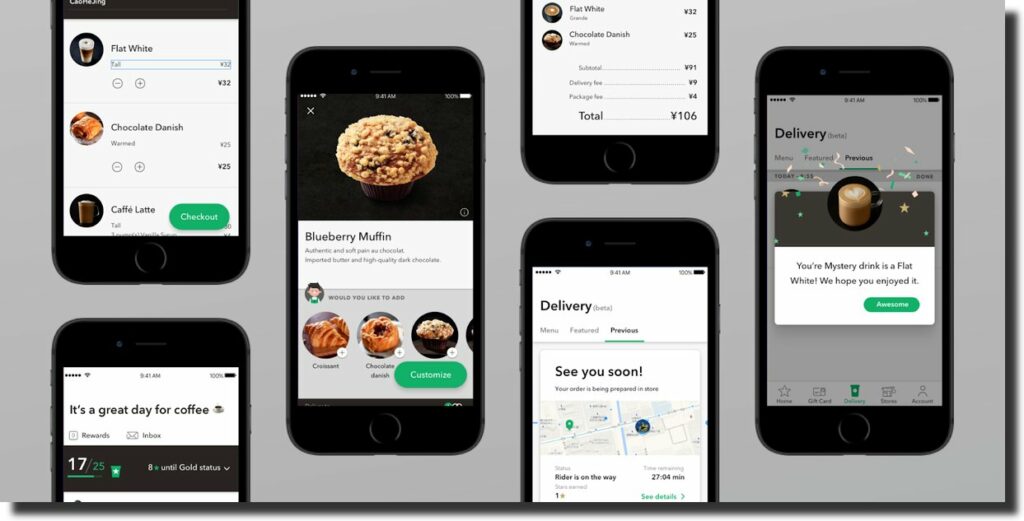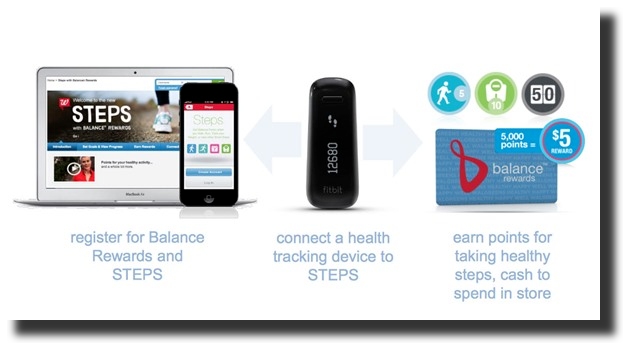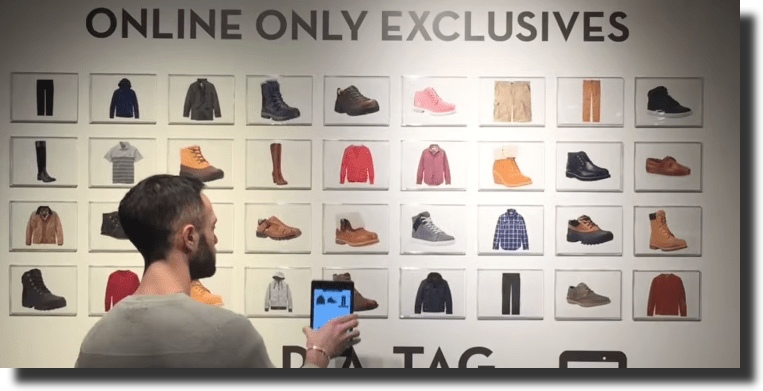Today, marketing is no longer limited to a single channel. So many brands are trying to reach as many people as possible through various mediums, from social networks and TV ads to email marketing and word-of-mouth promotions. Omni channel marketing aims to make your brand more accessible to customers on multiple platforms.
It’s a new approach to customer service and product development. It’s the next step in the evolution of marketing, where sales, customer support, and product development are seamlessly integrated across many channels like digital, social media, and physical stores.
In this article, you’ll learn what is omnichannel marketing, why it’s so important to your company, the benefits of using this approach, and some case studies that show how it’s been implemented successfully by companies.
Let’s start!
What Is Omnichannel Marketing?
Omnichannel marketing integrates branding, messaging, and online and offline touchpoints to create a more impactful customer experience. It ensures the consumer has a positive, consistent experience on each channel, which can boost conversion rates and drive greater brand loyalty.
One of the benefits of omnichannel marketing is that it can help reduce customer churn. By providing an engaging experience across all channels, customers are more likely to stick around and make purchases. This helps businesses retain valuable customers and build stronger relationships with them.
Omnichannel marketing also allows businesses to target customers more effectively. For example, if you sell products online and offer a physical location where customers can buy your products, you would use omnichannel marketing to ensure that your website content is relevant to both audiences. This way, you’re reaching potential buyers interested in buying your products online and those interested in purchasing your product in person.
Overall, omnichannel marketing is an effective way for businesses to connect with their customers and create positive relationships that increase sales.
Key Elements Of An Omnichannel Approach
Omnichannel marketing strategies aim to provide a consistent, identifiable brand tone and vision across all channels while tailoring messaging based on specific interests and the buyer’s journey stage.
Some key elements of an omnichannel approach to ensure a positive customer experience include the following:
Consistent Branding
The overall look and feel of the brand should be consistent across all channels, from website to social media to in-store experiences. This will help create a sense of familiarity and trust for customers.
Personalized Messaging
Brands should tailor their omnichannel marketing campaign based on what customers are interested in or the current stage in their buying process.
For example, if a customer is researching products before making a purchase, the brand should focus its messaging on product information and recommendations. The brand should emphasize convenience and offer helpful tips if a customer is close to completing their purchase.
Tailored Content
Content across all channels must be relevant to the audience and engaging enough to keep customers returning. This means writing for beginners and experts, using visual content whenever possible, and incorporating interesting animations into your omnichannel marketing campaign.
By taking these key steps, brands can ensure that customer interaction is positive – no matter which channel they use.
Multichannel Marketing vs Omnichannel Marketing
Multichannel marketing refers to a customer’s experience with a company across multiple channels, such as online, offline, and in-store. Omnichannel takes this one step further and looks at how the customer journey may span multiple channels – and creates a seamless experience for consumers as they move between them.
One key difference is that multichannel often focuses on the specific channel in which a transaction will be completed (such as online or in-store). On the other hand, Omnichannel considers the entire customer journey and creates an environment that allows customers to complete transactions in the most convenient manner possible.
Both multichannel and omnichannel strategies have their benefits. Both can provide customers with an improved experience that drives business results when implemented correctly.
Benefits Of Omnichannel Marketing
Implementing an omnichannel approach can yield the best results. By offering customers a wide range of channels through which to interact with your business, you can create a more personalized experience and increase customer loyalty.
Additionally, an omnichannel approach allows businesses to tap into new markets and channels of distribution, which can lead to increased revenues.
When done properly, omnichannel marketing strategies can help businesses reduce costs associated with marketing and shipping and build a more robust customer base. By taking advantage of all the various digital platforms available today, businesses can reach customers in ways they never thought possible.
Here are some benefits of implementing Omnichannel marketing:
Improved Customer Experience
Businesses can create a better user experience when managing customer relationships through multiple channels. This is because customers can access the company’s products and services in ways that are convenient for them. Omnichannel marketing can help businesses achieve this goal by allowing them to reach customers through various platforms, including the internet, phone, and in-person interactions.
By using omnichannel marketing, businesses can keep track of customer data across all channels. This information can improve customer interactions and provide a better experience. Businesses can foster stronger relationships with customers and build trust over time.
Creating a Cohesive Brand Strategy And Identity
By creating a cohesive brand strategy and identity, businesses can ensure that their message is communicated effectively across all channels. This means adopting an attitude and tone that reflects who you are as a business. For example, if your company is known for its pleasant customer service representatives, emphasize this through your marketing materials and interactions with customers.
Consider using specific colors, fonts, and imagery associated with your company’s core values to create a cohesive brand identity. This will help customers associate your products or services with those values, increasing loyalty and encouraging repeat business.
By following these simple steps, you can create a strong and recognizable brand that customers will appreciate—and may even come back to again and again!
Increased Revenue
Omnichannel marketing can help businesses generate more revenue from their customers. Customers who can access a company’s products and services through multiple channels are more likely to buy than those who only have one channel available.
Companies that offer a good customer experience through omnichannel marketing may increase sales even when they don’t update their website or change their omnichannel marketing campaign.
Secondly, omnichannel marketing allows businesses to extend the reach of their sales efforts beyond the traditional retail environment. By targeting consumers through social media, email newsletters, and other digital channels, companies can find new customers who may not have been reached through traditional sales methods.
In addition, by incorporating mobile apps into their omnichannel marketing plans, companies can engage with consumers wherever they’re – at home or on the go.
Better Data Attribution
Tracking engagements across channels allows you to understand better the customer journey, when and where they prefer to engage, and which campaigns have created the most value for them. By understanding these trends, you can build more targeted campaigns and optimize media spending accordingly.
Omnichannel marketing gives you a better understanding of your customer’s preferences. You can see which engagements perform best for your customer base by tracking engagements across channels. You can then use this information to develop more effective marketing strategies that resonate with them individually.
Omnichannel marketing also helps you track how people interact with your brand across different mediums. This data can help you identify popular content, links shared on social media, and more. You can use this information to improve customer service or design new features. Understanding how customers interact with your company can create a better experience.
Overall, using omnichannel marketing is a great way to reach out to current and potential customers in a more personalized way. You can determine what works best for each customer by tracking engagement across channels and adjusting as needed.
5 Steps for Leveraging Omnichannel Marketing
When creating an omnichannel experience, there are a few essentials you need to take into account.
Here are the steps to leverage omnichannel marketing:
1. Data Collection
To create a successful omnichannel strategy, it’s essential to have accurate and timely data about your consumers. This data can be collected through various methods, including surveys, customer feedback forms, and online tracking tools.
One important way to collect data is through customer surveys. Customer surveys can help you learn what customers want from your omnichannel platform and how they use it. By collecting this information early in the development process, you can ensure that your omnichannel platform meets the needs of your consumers.
Another important way to collect data about your consumers is through customer feedback forms. These forms allow customers to provide feedback about their experiences with your products or services online or offline. Using customer feedback forms, you can identify problems with your omnichannel platform before they become too big to fix.
Finally, online tracking tools are another way to collect customer data. These tools allow you to track the activity of individual customers across different channels (such as website visits, social media posts, and downloads). By closely monitoring these interactions, you can ensure that your customers have positive experiences with your omnichannel platform.
2. Data Analysis
Analytics platforms are essential for any brand to deploy an omnichannel marketing strategy. By understanding customer behavior across all channels, brands can course-correct and provide the best experience to consumers in real-time.
There are several different analytics platforms available, so it’s important to choose one that will fit the needs of your business. Some of the most popular options include Google Analytics and Facebook Insights. Both platforms offer robust data analysis capabilities and the ability to connect with other parts of your business via APIs.
You’ll need to invest in training and resources to get the most out of your analytics platform. Your team needs to be familiar with how the platform works and be able to use it to identify trends and make informed decisions.
By using an analytics platform, you can ensure that your campaigns are meeting consumer needs.
3. Customer Journey Mapping
When planning an omnichannel marketing campaign, it’s important first to understand the customer journey for each of your target audience segments. By mapping out the different steps customers take through your organization’s channels, you can better target and communicate with them throughout their purchase process.
4. Brand Guidelines
When developing a brand strategy, it’s important to have clear guidelines for messaging and creativity. This will help the organization stay consistent with its message and create a professional image. Here are some tips for developing a brand identity:
- Create a visually appealing logo and design scheme that is easy to recognize and supports the organization’s overall message.
- Develop marketing materials consistent with your branding and target your audience appropriately.
- Ensure all digital content is well-written, engaging, and relevant to your audience.
- Stay up to date with trends in messaging and design so you can keep your brand looking fresh.
5. Testing And Optimization
Testing and optimization are essential in any omnichannel marketing strategy. By constantly testing the efficacy of your omnichannel approach, you can ensure that you’re getting the most out of your efforts.
One way to test whether an omnichannel campaign works is to measure conversions. You may achieve this by tracking clicks, impressions, or any other metric associated with a conversion event. You can also track past customer behavior to understand better what motivates them to purchase through your channel.
Furthermore, it’s important to optimize your channels for maximum effectiveness. This may include tailoring messaging and offers to specific customer segments, optimizing website copy for search engines, and developing landing pages that convert well.
By testing and optimizing your omnichannel marketing strategy, you can ensure that your customers receive the best possible experience from your online presence.
Industries Applying Omnichannel Tactics
Here are the industries that implement omnichannel tactics in their marketing campaigns:
Retail
Retailers increasingly rely on omnichannel tactics to provide customers with a more personalized shopping experience. Omnichannel strategies allow retailers to offer customers various products and services through different channels, including online, in-store, and by phone. Moreover, thanks to the advanced cloud phone systems businesses can now provide faster customer support via the Internet instead of traditional phones.
Omnichannel is especially popular in the retail industry because it allows retailers to target their customers effectively. By offering customers access to various products and services through different channels, retailers can accommodate customer needs and preferences. This allows retailers to reduce customer service costs and increase sales volume.
Some retailers’ most popular omnichannel strategies include mobile shopping and e-commerce. Mobile shopping allows consumers to buy goods and services from anywhere at any time using their smartphones. E-commerce platforms such as Amazon allow consumers to browse and purchase items from the comfort of their own homes.
Retailers are also using omnichannel tactics to promote special promotions or sales events. For example, Sears offers discounts on online items during its Black Friday sale event. By promoting special sales events through multiple channels, retailers can attract more shoppers interested in taking advantage of promotional deals.
Healthcare
Healthcare is one of the most omnichannel-friendly industries because patients have a lot of power. Patients can choose where to receive their care, what care they need, and how much they’re willing to pay. In addition, patients can access healthcare information through various channels, including websites, apps, social media, and even wearable devices.
Automotive
Automotive is one of the verticals where omnichannel approaches are particularly prominent. The trend of using various channels to interact with customers has become increasingly common, and it has proven to be a successful way for automakers to connect with their customers.
One way automakers have leveraged omnichannel tactics is by using digital marketing tools. These tools allow them to reach out to customers in various ways, including through social media, email marketing, and paid advertising. Automakers can keep their customers informed about new products and services using multiple channels.
Additionally, automakers have used omnichannel strategies to improve customer service. They’ve created platforms that allow customers to contact the company directly from their devices. They’ve also implemented chatbots to serve customer needs better.
Financial Services
In banking and telecommunications, omnichannel refers to using digital platforms to provide customers with various services such as account opening and transactions, bill payment processing, and phone service.
Banks are particularly adept at omnichannel methods because they have a large customer base constantly moving between channels. Telecommunication companies use omnichannel methods to reach consumers switching from traditional landlines to cell phones or from one type of phone service to another.
Omnichannel Marketing Trends
Following are the current Omnichannel marketing trends to jump on for success:
Integration of In-Store and Online
In-store and online shopping is on the rise, with many consumers prefer shopping online only to pick up their purchases in-store. The integration of these two channels has become more important as omnichannel becomes more popular to provide better customer service and maximize marketing ROI.
Some benefits of integrating online and in-store shopping include increasing customer satisfaction by providing a seamless experience, reducing shipping costs, and increasing brand awareness. Additionally, it can increase product sales by making it easier for customers to find what they’re looking for and compare prices.
Several factors need to be considered when integrating these channels, including the layout of the stores, the inventory available on each platform, and customer preferences. It’s also important to consider how customers interact with the platforms: do they prefer using a mouse or a keyboard? Should links be provided between the platforms so customers can continue browsing after completing an online purchase?
Focus on the Brand, Not the Channel
To ensure that consumers have a positive experience, it’s important to maintain the continuity of information and resources. Retailers should ensure that all touchpoints – including website, app, social media posts, store signage, etc. – are coordinated and consistent so shoppers know where they can find the latest deals and product information.
Additionally, it’s important to keep track of consumer interests to tailor your messaging accordingly.
Multiple Devices For One Purchase
In a world where consumers have multiple devices to choose from, retailers realize that they can maximize their returns by offering customers more choices. This lets shoppers mix and match devices to find the perfect fit for their needs, which leads to happier customers and higher satisfaction ratings.
Multiple Channels Mean Better Customers
One benefit of using multiple channels is that it can drive more traffic to a site or e-commerce store. Businesses can generate leads and potential customers from all over the web by targeting different audiences through different channels. In addition, by providing engaging content across all channels, businesses can keep customers returning and increase brand awareness.
Examples Of Omnichannel Marketing
Here are the examples of omnichannel marketing campaigns brands have created successfully:
Starbucks
Starbucks believes that the best way to serve customers is with convenience. And they’re doing this by integrating mobile and in-store touchpoints, ensuring their consumers have the best possible experiences. Starbucks rewards users with points for their purchases and allows them to skip the line at their stores by pre-ordering through their mobile app.

Walgreens
With the Walgreens app, customers can easily refill their prescriptions and pick them up on their way to the store. Its inventory also helps consumers decide which location is best for them.

Timberland
With the new technology of NFC, Timberland customers can chat with customer service representatives in stores. This communication system provides real-time information on their products and offers to help with online orders or purchases.

Let UPQODE Create An Omnichannel Marketing Strategy That Drives Leads And Sales!
Omnichannel marketing is a growing trend in business, and for a good reason. By engaging customers in multiple channels simultaneously, you can create a more engaged customer base that will likely buy from you again and share your brand with their friends.
UPQODE provides a comprehensive marketing strategy that helps businesses gain traction regardless of their medium. We help you build a cohesive omnichannel marketing strategy that encompasses all your marketing channels.
Bring your omnichannel marketing strategy to life with UPQODE. Contact us now!



